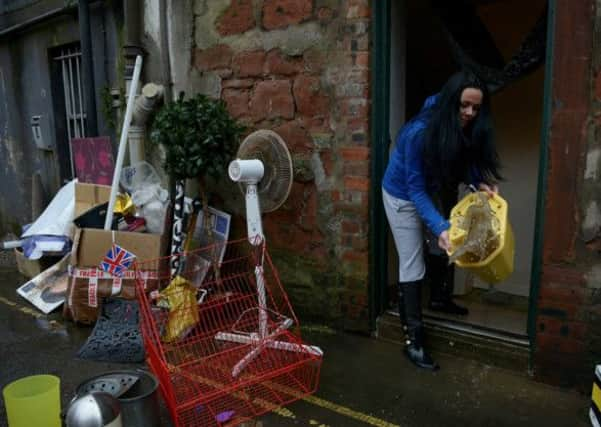Homes hit by floods face insurance price hike


But while insurance companies say they are committed to paying out claims as quickly as possible, experts warn that many of those hit by flood- related damage face soaring premiums that could leave many unable to afford cover in future.
The Scottish Environment Protection Agency (Sepa) issued 360 flood alerts in the month to 5 January. The number of “initial messages” sent (when a flood warning comes into force) was three times higher than in the corresponding period a year ago.
Advertisement
Hide AdAdvertisement
Hide AdAmong the biggest warnings were those issued in the firths of Forth, Clyde and Tay last weekend. While the worst fears were not realised on that occasion, properties were flooded in areas including Dumfries and Galloway, Aberdeenshire, Ayrshire and Argyll.
Those affected now face the task of claiming on home insurance policies to cover often extortionate repair costs.
Halifax Home Insurance reported a 300 per cent spike in flood-related calls in December, when the average cost per flood claim last month was £13,855 for each incident.
The average paid out to flood-damaged homes and businesses in 2012 was £18,200 per claim, according to the Association of British Insurers (ABI).
Yet a UK government dispute with insurers means some homeowners affected by flooding may struggle to secure insurance in future.
This bleak scenario stems from the failure to extend a previous agreement – the statement of principles – under which insurers guaranteed cover for flood-risk homes, provided the government invested in flood defences.
That expired last summer and is being replaced by a deal called Flood Re. The new agreement features a £10.50 levy on all home insurance policies to subsidise capped premiums for flood-risk properties. The plan goes before the House of Lords over the coming months as part of the Water Bill, but not all flood-risk homes will benefit.
That’s because around half of homes currently considered at significant risk of flooding won’t be covered. The properties not included in Flood Re include farms, some buy-to-let properties, homes in council tax band H and houses built after 2009.
Advertisement
Hide AdAdvertisement
Hide AdWhile some 500,000 UK homes will be protected by the Flood Re provisions, the government’s own research suggests nearly one million homes will be considered at risk of flooding by 2020.
Sepa figures show that one in 22 homes in Scotland are in the flood-risk category. And those that aren’t protected by Flood Re face a steep rise in premiums that will make home insurance all but unaffordable. Adding to the woes of those homeowners is the difficulty faced in being accepted for mortgage finance where no insurance is in place.
Flood Re is unlikely to come into effect before summer 2015, until which time insurers have agreed to honour the statement of principles. But those hit by the most recent floods have been urged to take care when submitting their insurance claims or risk being left out of pocket.
The temptation is often to throw away damaged items such as carpets and furniture, yet insurers need to see them to assess the damage, according to Simon Douglas, director of AA Insurance.
“If you really can’t stand to have damaged items in your home you should take photos of them before getting rid of them,” he said.
Douglas advised flood-affected homeowners to let their insurer know as soon as possible if they will need to make a claim. “They’ll be able to advise what to do next and tell you if there’s anything you need to support your claim, such as photographs of the damage,” he said.
“If you need any emergency repairs, tell your insurer and they may send somebody out to help or may give you the option to get your own tradesperson to do the repair. If you do that, make sure you keep the receipts and details of any work done.”
For more information, sign up for flood alerts at floodline.sepa.org.uk/floodingsignup/ or by calling Floodline on 0845 988 1188. Sepa also has a flood map at www.sepa.org.uk/flooding